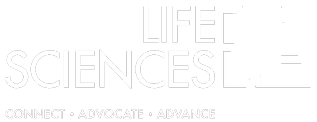By Linda Rowings
Chief Compliance Officer
United Benefit Advisors 
On February 10, 2014, the IRS issued final regulations on the employer-shared responsibility requirements, often known as “play or pay.” The final regulations follow the proposed regulations in many respects, but also contain some transition rule surprises.
For many employers, the most important part of these regulations is the transition rule – while employers with 100 or more full-time or full-time equivalent employees will still need to meet the play or pay requirements in 2015, those with 50-99 full-time or full-time equivalent employees do not have to comply until 2016 if they meet certain requirements. For these mid-size employees to be eligible for the delay, the employer will have to certify that:
- It has not reduced the size of its workforce or the overall hours of service of its employees so that it could qualify for this delay; and
- It has not eliminated or materially reduced any coverage it had in effect on February 9, 2014. A material reduction means that:
- The employer’s contribution is less than 95% of the dollar amount of its contribution for single-only coverage on February 9, 2014, or is a smaller percentage than the employer was paying on February 9, 2014;
- A change was made to the benefits in place on February 9, 2014, that caused the plan to fall below minimum value; or
- The class of employees or dependents eligible for coverage on February 9, 2014, has been reduced.
It is expected that this certification will be part of the reporting form.
This delay does not affect the effective date of the insurance market rules – employers still must implement the changes required for 2014, including the 90-day maximum for waiting periods, discontinuance of pre-existing condition limitations, removal of annual dollar maximums, and cost-sharing maximums (out-of-pocket and sometimes deductible) limits. Small insured groups still need to offer the 10 essential health benefits at the metal levels (i.e., platinum, gold, silver, and bronze) and use community rating starting in 2014.
Large Employer Responsibilities and Potential Penalties
If an employer is large enough for the play or pay requirements to apply, two separate requirements, and potential penalties, apply.
The first requirement is that the large employer offer “minimum essential” (basic medical) coverage to most of its employees. For 2015, “most” means 70% of its employees. For 2016 and later, “most” means 95% of its employees. If the employer does not meet this requirement, it will owe $2,000 per full-time employee, even on employees who are offered coverage. However, for 2015 the first 80 employees are excluded from this calculation. Beginning in 2016, the first 30 employees are excluded.
Beginning in 2016, the requirement to offer minimum essential coverage includes dependent children (up to age 26). An employer that offered coverage for dependent children in 2013 or 2014 is expected to maintain that eligibility. Coverage does not have to be offered to stepchildren or foster children or to spouses.
The second requirement is that the large employer offer coverage that is both “affordable” and “minimum value” to its full-time (30 or more hours per week) employees or pay a penalty of $3,000 per year for each full-time employee who receives a premium tax credit. Therefore, an employer that provides minimum essential coverage to most of its employees and avoids the $2,000 per employee penalty, still may have to pay the $3,000 penalty on an employee who is either in the group that is not offered coverage or who is offered coverage that is not both affordable and minimum value if the employee receives a premium tax credit.
Under both the proposed and final regulations, coverage is considered affordable if the cost of single coverage for the least expensive plan option that provides minimum value does not exceed 9.5% of the employee’s income or Federal Poverty Level (FPL). The cost of single coverage is always the measure of affordability, even if the employee has family coverage. An employer may use any of three safe harbors when measuring the employee’s income:
- The employee’s Box 1 W-2 income for the current year.
- The employee’s rate of pay on the first day of the plan year, multiplied by 130 for hourly employees to create the employee’s assumed monthly income.
- The most recently published FPL for a single person (for 2014, FPL for a single person in the 48 contiguous states is $11,670, for Alaska it is $14,580, and for Hawaii it is $13,420).
Coverage is considered minimum value if the actuarial value of the coverage is at least 60%.
Additional information is available through a U.S. Treasury Department fact sheet.
UBA has also developed an analysis of the Employer Shared Responsibility (Play or Pay) Final Regulations. To request the analysis, click here.
2/13/2014









